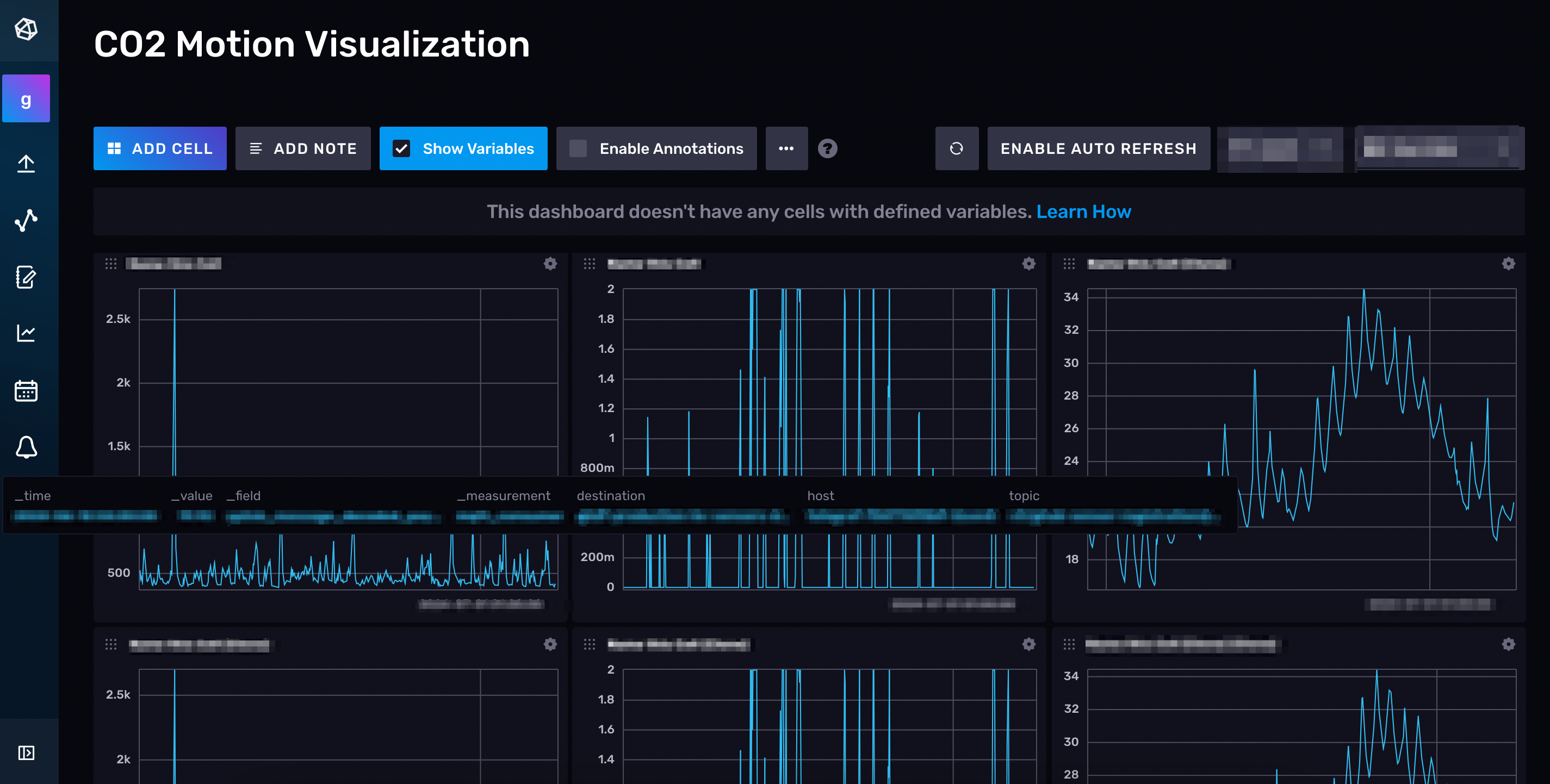Optimizing Air Quality Monitoring with IoT: A Case Study
The Internet of Things (IoT) is revolutionizing how we monitor and manage various environments, and air quality is a prime example. By integrating advanced technologies such as LoRa, InfluxDB, Telegraf, and Chronograf, this IoT stack demonstrates the power of smart technologies in reducing CO2 levels and energy consumption, ensuring healthier and more efficient environments.
Case Study: Air Quality Monitoring
Project Objectives
Our primary objective was to control high CO2 levels in a large office building. The project aimed to:
- Gather and analyze air quality data continuously.
- Trigger notifications to building managers based on fluctuating air quality.
- Significantly reduce energy consumption by providing actionable insights from the data
Technological Stack
- LoRa Network:
- Long-Range Communication: LoRa's capability to transmit data over long distances with minimal power consumption made it ideal for our extensive monitoring needs.
- Deployment: LoRaWAN-enabled CO2 sensors were strategically installed throughout the building, ensuring comprehensive coverage and real-time data transmission to central gateways.
- InfluxDB:
- Time-Series Data Handling: InfluxDB was selected for its efficiency in managing high-frequency, time-stamped data, which is crucial for continuous air quality monitoring.
- Data Storage: The database stored CO2 levels, temperature, and humidity data with precise timestamps, enabling detailed temporal analysis and historical data review.
- Telegraf:
- Data Collection: Telegraf agents were configured to gather data from LoRa sensors and feed it directly into InfluxDB.
- Integration: The MQTT input plugin facilitated seamless data transfer from the sensor data collected at The Things Network (TTN) to the central database, ensuring real-time data availability.
- Kapacitor Integration:
- Real-Time Processing: Integration with Kapacitor allowed for real-time data processing and analysis, triggering instant notifications to building managers when CO2 levels exceeded safe thresholds.
- Chronograf Integration:
- Visualization: Chronograf was used to visualize the sensor data across all sensors, providing building managers with clear, actionable insights on how to maintain optimal air quality.

Outcomes
The implementation of this IoT solution led to remarkable improvements:
- Enhanced Air Quality: Continuous monitoring and notifications to building managers ensured CO2 levels remained within safe limits, contributing to a healthier indoor environment.
- Energy Savings: By notifying motion and co2 levels, building managers were able to manage HVAC systems and reduced peak energy consumption by 80%, demonstrating significant operational efficiency.
- Real-Time Insights: The combination of LoRa, InfluxDB, Telegraf, Kapacitor, and Chronograf provided actionable insights, enabling proactive management of air quality and energy usage.
Transform Your Operations with Coding Delta
The success of this air quality monitoring project underscores the transformative potential of integrating IoT technologies. By leveraging LoRa for connectivity, InfluxDB for data management, Telegraf for efficient data collection, and Chronograf and Kapacitor for real-time communication, we created a robust system that not only improved air quality but also optimized energy usage.
Why Choose Coding Delta?
At Coding Delta, we specialize in developing custom IoT solutions that address specific business needs. Our expertise in IoT technologies ensures that we can deliver scalable, reliable, and efficient solutions tailored to your requirements.
Ready to Transform Your Operations with Cutting-Edge IoT Solutions?
Contact Coding Delta today to discuss your project needs and discover how we can help you achieve your goals. Partner with Coding Delta and take the first step towards revolutionizing your operations with IoT.